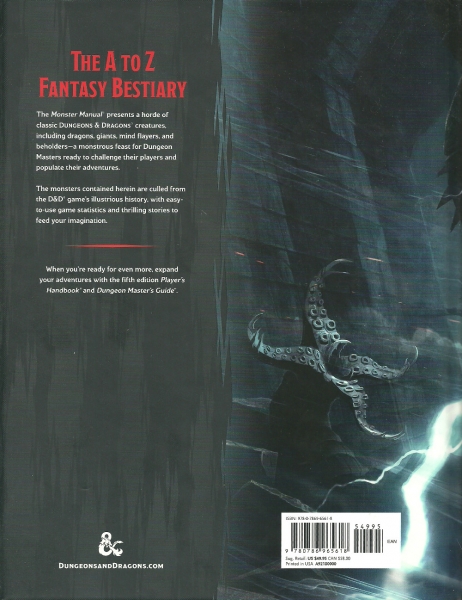D&d 5th Edition Monsters
Harold Johnson, David 'Zeb' Cook, Ed Greenwood. DUNGEONS & DRAGONS, D&D, Wizards of the Coast, Forgotten Realms, the dragon ampersand, Player's Handbook, Monster. 5th-level spell by using one of its 5th-level spell slots. © Costamar Travel 2017 Directorio Virtual. Bienvenido al Directorio Virtual.
Find real-time D - Dominion Energy Inc stock quotes, company profile, news and forecasts from CNN Business.

2.086.0/ 4 May 2019; 46 days ago ( 2019-05-04),.dWebsiteMajor,Influenced by,Influenced,. at WikibooksD, also known as Dlang, is a created by at and released in 2001. Joined the design and development effort in 2007. Though it originated as a re-engineering of, D is a distinct language. It has redesigned some core C features, while also sharing characteristics of other languages, notably, and.The design goals of the language attempt to combine the performance and safety of with the of modern.
D code is commonly as fast as equivalent C code, while also being shorter. The language as a whole is not, but does include optional attributes designed to check memory safety., and for allow faster, while, features and a -aware help reduce the occurrence of. Contents.Features D is designed with lessons learned from practical C usage, rather than from a purely theoretical perspective. Although it uses many and C concepts it also discards some, and is as such not compatible with C and C source code. D has, however, been constrained in its design by the rule that any code that is legal in both C and D should behave in the same way. D gained some features before C did, for example,. D adds to the functionality of C by also implementing, true, and a re-engineered syntax.
D retains C's ability to perform and to add. C is replaced by Java-style with. On the other hand, D's declaration, statement and expression closely matches that of C.The typifies the differences between D and application languages like. An inline assembler lets programmers enter machine-specific within standard D code, a method often used by system programmers to access the low-level features of the needed to run programs that interface directly with the underlying, such as and.D has built-in support for documentation comments, allowing automatic.Programming paradigms D supports five main:, and.Imperative Imperative programming in D is almost identical to that in C.
D&d 5th Edition Monsters By Challenge Rating
Functions, data, statements, declarations and expressions work just as they do in C, and the C runtime library may be accessed directly. On the other hand, some notable differences between D and C in the area of imperative programming include D's loop construct, which allows looping over a collection, and, which are functions that are declared inside of another and may access the enclosing function's.Object-oriented Object-oriented programming in D is based on a single inheritance hierarchy, with all classes derived from class Object. D does not support multiple inheritance; instead, it uses Java-style, which are comparable to C's pure abstract classes, and, which separates common functionality from the inheritance hierarchy. D also allows the defining of static and final (non-virtual) methods in interfaces.Metaprogramming Metaprogramming is supported by a combination of templates, compile time function execution, and string mixins. The following examples demonstrate some of D's compile-time features.Templates in D can be written in a more imperative style compared to the C functional style for templates. This is a regular function that calculates the of a number.
D-day
On June 6, 1944, more than 160,000 Allied troops landed along a 50-mile stretch of heavily-fortified French coastline, to fight Nazi Germany on the beaches of Normandy, France. Eisenhower called the operation a crusade in which, “wewill accept nothing less than full victory.” More than 5,000 Ships and 13,000 aircraft supported the D-Day invasion, and by day’s end, the Allies gained a foot-hold in Continental Europe. The cost in lives on D-Daywas high. More than 9,000 Allied Soldiers were killed or wounded, but their sacrifice allowed more than 100,000 Soldiers to begin the slow, hard slog across Europe, to defeat Adolf Hitler’s crack troops.